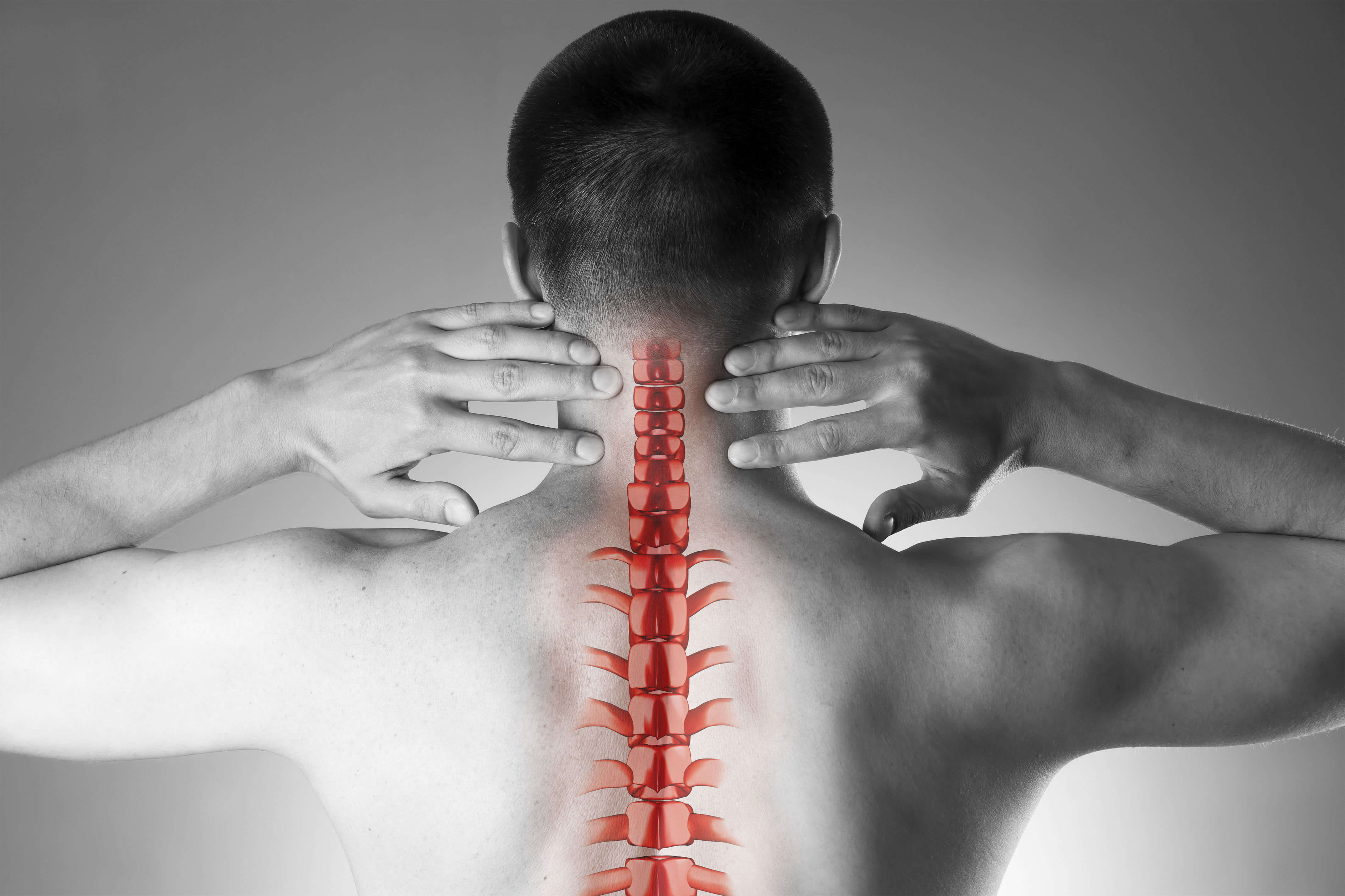Background/description
Herniated Cervical Disc also known as Cervical Radiculopathy (“slipped disc”, “ruptured disc”) is a medical term for the pain (neck and arms), numbness, tingling and weakness associated with a herniated disc in the cervical (neck) region. Patients often undergo significant suffering and reduction in quality of life with this condition. It is the second most common type of disc herniation, following lumbar (back) disc herniation. Cervical disc herniation occurs in the neck region, usually between the lower cervical vertebral bodies but can occur in any disc of the cervical spine. The essence of the condition is a tear in the fibrous outer ring of the disc between vertebrae which then allows for the central component (nucleus pulposus) to protrude out. This nucleus pulposus carries a cascade of inflammatory chemicals that often irritate and compress cervical spinal nerves causing symptoms. This can occur spontaneously or from trauma, lifting, and straining of the neck.
Symptoms of this condition depend on the location and severity of the herniation. In terms of location, there are seven cervical vertebral bodies with discs between them (these are the ones that can herniate) with 2 spinal nerves exiting at each level. Vertebral discs provide support and mobility for the neck region. Severity is often caused by how much of the disc has herniated and subsequently compressed the surrounding cervical spinal nerve. Patients’ symptoms can range from mild sensory changes in the neck and arms: numbness, tingling, paresthesia to sharp shooting pain, muscle weakness, and arm paralysis. Severe symptoms should warrant immediate medical evaluation.
Diagnosis and Management
Diagnosis of cervical disc herniation is a clinical one often resulting from the story (history) provided by the patient and the physical examination findings. Examination includes a thorough neurological examination to uncover motor and sensory changes. This will often lead to the “culprit” cervical nerve root that is impingement by a cervical disc herniation. Other signs include increase in arm reflexes and a maneuver known as Spurling’s, where downward pressure is applied by a physician on a patient’s neck to recreate arm tingling and numbness. There is no “gold standard” for diagnosing cervical disc herniation but often imaging, specifically MRI, is very helpful. Imaging may point to the existence of specific locations of disc protrusion and if correlating with the symptoms may aid in the diagnoses. There is a high degree of variability in the symptoms experienced by patients. Most concerning as worsening pain and weakness in arm. Other possible diagnoses for neck/arm symptoms are nerve entrapment medical conditions such as carpal tunnel (median nerve) syndrome and cubital tunnel (ulnar nerve) syndrome. These can often be diagnosed clinically with the support of a nerve conduction study.
Most cervical disc herniations will heal on their own with conservative measures (include rest, ice, heat, anti-inflammatory medications). Most of the time the symptoms involve pain, numbness, and weakness in the arm. If symptoms do resolve, they often do so in a period of weeks to a couple of months. Otherwise, initial treatment often begins with conservative measures including education, light exercise, medications (short course of anti-inflammatories), physical therapy, body mechanics, cervical traction, and weight control. More invasive treatments include interventional pain injections (cervical epidural steroid injections) and/or surgery (most commonly anterior cervical discectomy and fusion – ACDF). Cervical epidural steroid injections involve depositing a small quantity of steroid and local anesthetic mediation, using X-ray image guidance, onto the affected cervical spine nerve. These may often be repeated every 3-6 months depending on the symptoms. Indications for surgery include patients with ongoing arm pain despite 6-8 weeks of conservative treatment along with signs of motor weakness.
